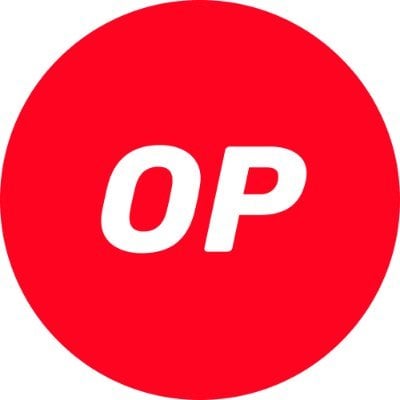Rollups are in fierce competition; will a monopolistic Rollup emerge?
Author: Huang Shiliang, Lightning HSL
Currently, the Rollup on the Ethereum ecosystem is in fierce competition, and Rollup can be seen as a special type of public chain, which is almost the same as a public chain for users.
The fierce competition among various public chains began around 2016, but it seems that Ethereum has ultimately formed a monopoly advantage, and other chains currently appear to struggle to challenge Ethereum's ecosystem.
The confirmation of ETH's monopoly advantage occurred around 2022, after the super bull market formed by DeFi and NFTs, and currently, the only remaining ecosystem is Ethereum. Once strong competitors like BSC, Solana, Polkadot, and AVAX have weakened during the bear market.
Public chains have generated many investment opportunities, but most coins are severe roller coasters, with more chances of falling into pits. Holding ETH currently seems to be one of the few coins that can be held long-term without fear of roller coasters.
In the current Rollup competition, will a monopolistic Rollup emerge, providing investment opportunities similar to ETH?
It should be around 2021 when the concept of Rollup began to gain popularity. At that time, Arbitrum had absolute advantages in technical strength and timing. Currently, Arbitrum still holds advantages both technically and ecologically.

Arbitrum One's TVL currently accounts for about 55% of all Rollups.
OP Mainnet relies on a solid economic model, an earlier token launch, and numerous ecological products forming alliances, creating a strong competitive situation with Arbitrum across various metrics.
Recently, Coinbase launched Base-rollup, which quickly took the top spot in popularity. Base's TPS is now the highest among all Rollups.

Zksync likely ranks second in TPS due to expectations of an airdrop.
These two sets of data are among the few that can be conveniently displayed; comprehensively evaluating the pros and cons of Rollups is too difficult, so we can only present some simplified models for evaluation.
TVL represents the present, while TPS represents the future.
The launched tokens of Arb and OP occupy the top of the TVL, while the yet-to-launch tokens of Base and Zksync lead in TPS.
Imagine if both Base and Zksync launched tokens, how much would the TVL advantage of Arb and OP decline?
From these two simplified data models, I feel that the competition among Rollups has exceeded two years, and it is currently impossible to see which Rollup has the potential to form a monopolistic advantage.
From Uniswap's victory in the fierce competition among various DEXs to become a monopolistic DEX, and from ETH's emergence as a monopolistic public chain in the brutal competition among public chains, we can summarize the following perspectives to evaluate whether a monopolistic project emerges within a category.
1. Technical Barriers
Some performance indicators determined by technology, such as OP-rollup's ultimate TPS reaching 100 transactions per second, while zk-rollup claims to reach 1000 transactions per second.
For example, the lowest gas cost, like OP can achieve one-tenth of L1, and zk can achieve one-twentieth, etc.
Transaction security confirmation time, such as OP can ensure the security of transactions after 7 days similar to L1, while zk claims to achieve a finalization time of 10 minutes.
Security and decentralization levels are also performance indicators determined by technology.
If a specific project can achieve excellent results in these technology-determined performance indicators while others cannot, it has the potential for monopoly.
Uniswap's V3 version relies on high-efficiency capital quality, and its code has applied for copyright protection, ensuring that other projects cannot fork it for two years, thus helping Uniswap establish a monopoly advantage.
Currently, it seems that no project within the Rollup category possesses an insurmountable technical barrier compared to others.
2. Ecosystem Barriers
Evaluating specific projects within the Rollup category can be divided into the following sub-indicators.
1) The number, diversity, and activity level of the user base.
For example, the current user base of Zksync is clearly a single group of opportunists. This is an unreliable indicator.
2) The number, diversity, and brand mutual support level of ecosystem partners and allies.
Currently, OP Mainnet has the most allies and is the most reliable.
This indicator is particularly easy to form barriers because if large projects collaborate with OP, it becomes difficult to collaborate with Arb, as everyone wants to maintain their reputation, and being seen as two-timing is not favorable.
3) The number, diversity, and activity level of developers.
Although Rollups are mostly project-based, meaning that Rollup developers are self-sustained and not in the open-source developer model, blockchain projects still have a tradition of open source. If a Rollup has support from open-source developers, it feels like there is much stronger brand support.
Currently, OP Mainnet seems to have a relatively high number of open-source developers, mainly due to frequent support from the ETH Foundation. Arb also appears to have a considerable number of developers.
Open-source developers represent a good barrier; once people invest in a project, it is not easy for them to switch to something else, as developers are not like Sun Wukong.
A typical example is that the number and quality of Uniswap's developers far surpass those of other DEXs, making us perceive Uniswap as a very impressive project.
4) The number, diversity, and TVL of ecosystem projects, etc.
If a Rollup has DeFi, NFTs, GameFi, etc., and each is impressive, this represents a very good barrier. Building an ecosystem is incredibly challenging.
Ethereum succeeded because of these factors.
Back in the day, EOS was born with great potential, but its ecosystem was filled with gambling projects, and it couldn't survive a full market cycle, ultimately failing.
Currently, Arbitrum is the most successful in terms of ecosystem projects, establishing a good barrier compared to other Rollup projects.
3. Brand Influence and Reputation Barriers
This is a significant barrier; once a specific project within a category establishes a superior brand, that barrier becomes very real.
For example, Uniswap has almost become synonymous with DEX.
Currently, within Rollups, I feel that OP Mainnet is quite clever, as its project name directly relates to the technical term "Optimistic," thus establishing a good brand advantage.
Similarly, Zkevm and Polygon have developed a Rollup and directly named it Zkevm, making it seem like they are part of the same family as EVM.
However, overall, I feel that no specific project within the Rollup category has formed a brand advantage yet; everyone still seems relatively low-profile.
4. Innovation Capability Barriers
Projects that continuously produce new products and technologies represent a significant barrier.
Uniswap and ETH are the strongest in innovation within their respective fields, thus forming a huge barrier.
The development time of Rollups is still insufficient, and it is impossible to see who has strong innovation capabilities.
Both OP and Arb continuously recommend new products, but time is still too short to draw conclusions.
However, one indicator that may be assessed is R&D investment. Both Arb and OP have launched tokens and allocated development funds, so it can be assumed that their innovation capabilities are not lacking.
On the other hand, Zksync has raised several hundred million dollars, so its innovation capabilities are likely to be strong as well.
Additionally, regarding token prices, they are more of an outcome rather than a cause of monopoly. If a specific project possesses a monopoly advantage, its token price will be high.
In conclusion, from the above four dimensions, I feel that currently, no specific project within the Rollup category shows potential for monopoly. Further observation is needed.












